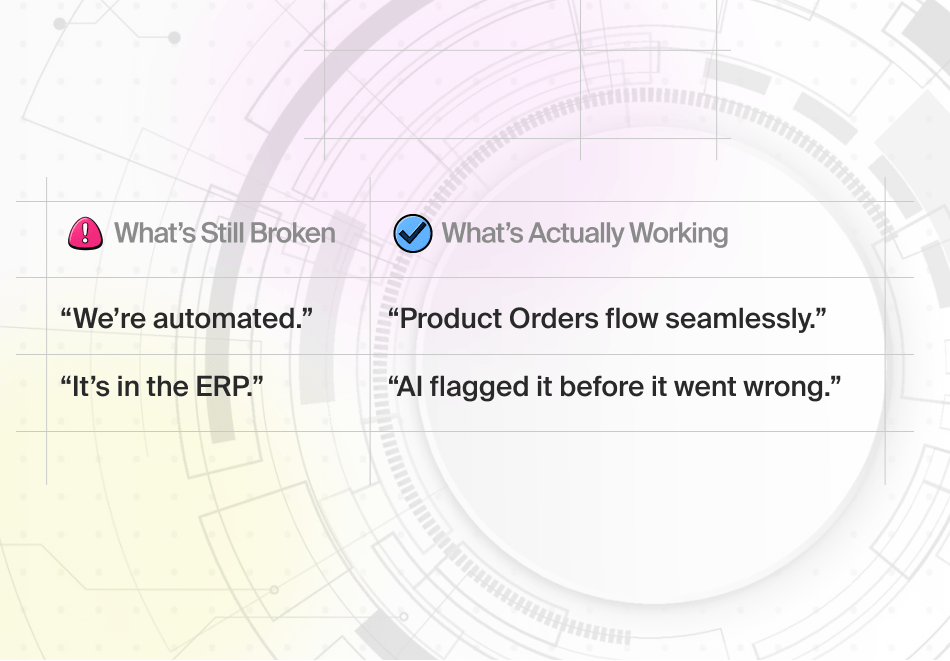Custom Workflows in Dynamics 365
In the first part of our workflow series, we discussed workflows in Microsoft Dynamics 365 (D365), the stages involved in workflows, their benefits, and some use cases. This week, we will teach you how to create a workflow in D365. Finally, we will share how this technology’s workflows can help organizations comply with regulatory requirements to avoid quality assurance issues.
Dynamics 365 lets businesses tailor workflows to match unique requirements, ideally making processes faster and more efficient. With workflows in place, you can focus more on delivering exceptional customer experiences. A recent whitepaper by MSDynamicsWorld discusses how workflows give companies 100% control over orders, increasing gross margins significantly.
Creating Workflows in D365
If you are just starting with Dynamics and are unsure where to begin, you’ll want to consider partnering with a Microsoft CSP (Cloud Solution Provider) that can help. Your Microsoft Partner will be able to guide you through the decision-making process, helping you determine what parts of Dynamics 365 your company can utilize in terms of what software, and for what departments, etc.
Creating a workflow in Microsoft Dynamics 365 (D365) is very straightforward. You can easily set up simple workflows in D365 on your own in just a few simple steps. As this series is meant to be more of a summary about how simple workflows can be, not a comprehensive guide to setting them up, we’ll only look at a simple workflow. If you want to go deeper and learn about setting up complex workflows that span multiple departments, your Microsoft CSP will be able to help you get started setting up Workflows in D365.
If you already have Dynamics 365 or are in the implementation process, not to fear- you can set up workflows in D365 in a few simple steps. This is not meant to be a comprehensive guide to setting up workflows, but a summary of the steps involved so you understand how simple workflows can be.
Creating a Workflow in Dynamics 365
- 1.Defining the Process: Identify the process you want to automate via workflows and the steps involved.
- 2.Creating the Workflow: In Dynamics 365 for Finance and Operations (F&O), go to the “Workflow” module area and select “New Workflow.” Give your workflow a name and define the parameters.
- 3.Defining Stages: Identify the stages or steps involved in the process you are creating a workflow for. Then, define the actions that need to be taken at each one of those stages.
- 4.Assigning Roles: Assign roles to each workflow stage to ensure that the right people are notified and responsible for completing the tasks.
- 5.Testing and Refinements: Test the workflow to ensure it is working as expected, then refine the workflow based on feedback and performance.
Workflows and Compliance
A critical need often overlooked by organizations is ensuring continuous compliance with laws and regulations. Standard Operating Procedures (SOPs) provide a set of guidelines that employees can follow to ensure that every action taken within the business is consistent, reliable, and compliant with relevant laws and regulations. Thankfully, maintaining workflows and standard operating procedures (SOPs) directly in D365 is one of the best ways for businesses to track and maintain consistency, efficiency, and regulatory compliance.
Managing and enforcing paper-based SOPs has always been a complex and challenging task. Take advantage of Dynamics’ included workflow capabilities to manage SOPs digitally. This will simplify your business’s SOP (Standard Operating Procedure) compliance with streamlined processes and tasks.
Let us explore how workflows in Dynamics 365 effectively simplify SOP compliance.
Streamline SOP Management
With D365, you can centralize your standard operating procedures (SOPs), enabling easy creation, updates, and storage of SOPs in one place. Workflows are crucial in enforcing SOP usage by guiding employees through the necessary steps and ensuring adherence to established processes. This centralized approach promotes consistency and eliminates the risk of outdated or conflicting SOPs, ensuring your employees can access the most up-to-date procedures.
Simplify SOP Auditing and Reporting
Staying compliant with laws and regulatory standards often requires regular audits and reporting. D365 workflows help simplify collecting and organizing the data required to complete the audit process. By automating data capture and integrating it into the workflow process, your company can generate accurate and comprehensive reports on regulatory compliance and SOPs. These reports provide valuable insights into potential improvement areas, highlight non-compliance patterns, and ensure regulatory procedures are being followed throughout the organization. With workflows in place to simplify auditing and reporting, your organization can identify areas for optimization, strengthening your SOPs and other regulatory compliance processes.
Efficient SOP Approval and Review Processes
D365 workflows automate the SOP management process, reducing manual effort and potential bottlenecks. Whenever a new SOP is created or an existing SOP requires modification, workflows can be configured to automatically route the document to the appropriate department or team member for validation. This workflow-based automation streamlines the process, eliminates delays, and ensures that SOPs undergo thorough validation by the relevant individual(s) or department(s) before implementation. Businesses can maintain a smooth and efficient SOP management process by simplifying the approval and review processes with workflows.
SOP Task Assignment and Tracking Made Easy
SOP compliance involves assigning and tracking tasks related to specific procedures. D365 workflows can help your company automatically assign tasks based on defined roles and responsibilities. Each employee is assigned specific tasks according to their role and permissions within the workflow. This simplifies task management, ensures that individuals understand their responsibilities, and promotes compliance with SOPs. Additionally, workflows provide real-time tracking capabilities, allowing managers to monitor task progress, identify bottlenecks, and take corrective actions promptly.
Proactive SOP Notifications and Reminders
Another key benefit of workflows in D365 is sending automated notifications and reminders related to SOP compliance. For instance, when a task is due or a review is required, employees receive timely notifications. These proactive reminders within workflows help employees stay on top of their responsibilities, ensuring SOPs are followed and due dates are met. By reducing the risk of being out of compliance, workflows can reduce worry and improve overall compliance rates within your company.
Figure 1:Workflows, SOPs, and Compliance

Simplifying SOP compliance is a critical aspect of maintaining operational efficiency, regulatory adherence, quality control, and risk mitigation. Setting up workflows in D365 can empower your organization to achieve and maintain SOP compliance effortlessly. This helps foster a culture of adherence to regulatory and compliance issues and sets a foundation for long-term success in regulated business environments.
76%
of decision-makers reported that workflows have helped them reduce errors and improve consistency in their business processes, as highlighted in a recent article by SoftwareOne.
Source: SoftwareOne
More About Workflows in Microsoft Dynamics 365
As your business continues to grow and evolve, keeping up with the latest technology and software is essential. Microsoft Dynamics 365 is an excellent solution for efficient operations and improved productivity. Workflows are a critical software component to ensure operations run efficiently and tasks are completed accurately and on time.
As with any technology, there is always more to learn, so many resources are available to learn more about workflows in D365. From online video tutorials and articles to training courses and certification programs, you can use various resources to maximize your software investment (ROI). Learning about workflows will benefit you and your business, whether you are an experienced user or just getting started.
Dynamics 365 F&O Workflows: Conclusion
In today’s digitally driven world, knowing how to use corporate technology tools is essential in maintaining a competitive edge. Workflows in Microsoft Dynamics 365 Finance and Supply Chain are an essential part of this process and are more accessible than ever. From speed to scalability, Microsoft’s flagship Enterprise Resource Planning (ERP) system helps increase efficiency and profitability, enabling users to customize the platform based on their unique business needs.
In the first installment, we explored the basics of workflows, their key benefits, and some use-case examples. This week, we discussed how to create a workflow, how workflows can help keep companies in line with SOPs and compliance, and provided some additional facts and resources about workflows in Dynamics 365.
Take your business’s quality operations into the future with workflows in Dynamics 365. Workflows help businesses improve efficiency and manage compliance standards without expensive hardware or IT support needs.








